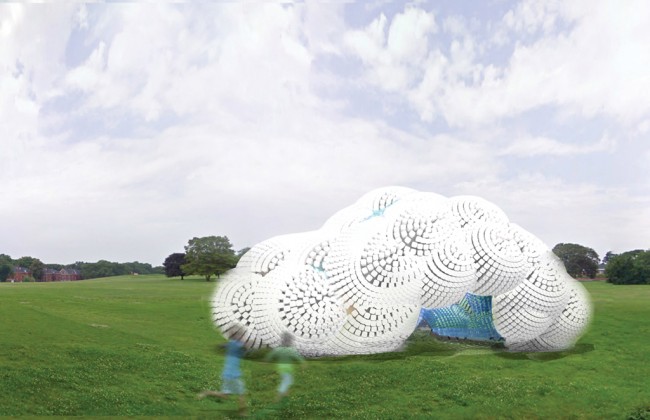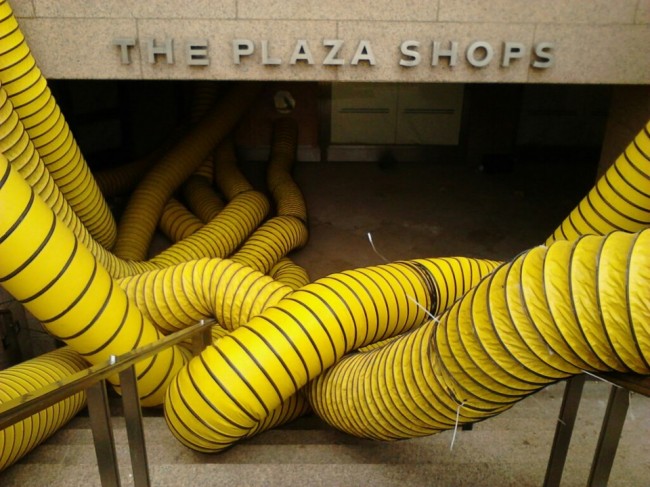
We are celebrating 15 years — and counting — of stories that are deeply researched and deeply felt, that build a historical record of what the city has been.
We are celebrating 15 years — and counting — of stories that are deeply researched and deeply felt, that build a historical record of what the city has been.
KEEPING CO-OP CITY AFFORDABLE
This week, Governor Cuomo, Mayor Bloomberg and US HUD Secretary Shaun Donovan announced a $621.5 million loan that will insure mortgages for Co-op City, the Bronx affordable housing mega-development. (Read more about Co-op City in this July 2012 UO feature.) The funds for the complex will come from federal, state, and city governments, and will ensure Wells Fargo Bank’s refinancing of Co-op City for the next 35 years. Governor Cuomo points out in a statement, “If it were an actual incorporated city, Co-op City would be the twelfth largest in our state — and so it is hard to exaggerate the critical role it has played for over 40 years in keeping housing in New York State and New York City affordable.”

via Figment
FIGMENT HAS ITS HEAD IN THE CLOUDS
The annual Figment Festival on Governors Island recently announced the winner of the 2013 City of Dreams Pavilion competition. Studio Klimoski Chang Architects’ project, Head in the Clouds, will be made from 53,780 water and milk bottles and structured into an inhabitable “cloud” of plastic, blue-dyed water, and sunlight. That number represents just one hour’s worth of trashed plastic bottle in New York City. Students at nearby schools will help collect the bottles.
MINIMIZING PARKING MINIMUMS
Downtown Brooklyn offers some of the borough’s best public transit access, and only 22% of households in the area own cars. Accordingly, the Department of City Planning is seeking to rewrite zoning laws that require the construction of off-street parking for new residential development projects. Currently, new buildings are obligated to provide parking spaces for at least 40% of households; new rules would reduce the requirement to 20%. The measure is likely to pass the City Council, and area representatives, Letitia James and Steve Levin, are calling for the additional space freed up by parking reductions to “include more income-restricted [housing] units, a new elementary school, or other community facilities.”
DOWNTOWN BROOKLYN CULTURAL DISTRICT
Also in Downtown Brooklyn this week, the City has announced “three major milestones” in its ongoing developments in the Downtown Brooklyn Cultural District. The Architect’s Newspaper gives an overview of the three new sites, which include: 600 residential units, 300 of which will be affordable housing; 50,000 square feet shared by Brooklyn Academy of Music, 651 ARTS, and the Brooklyn Public Library; and a RFP has been put out for 100,000 square feet of residential, community, and commercial space, with 15,000 square feet of culutral space.
24 HOURS OF MTA
New York City’s subway and bus systems come to life in a new graphic video by STLTransit. Mapping a 24-hour cycle of the five boroughs, colorful dots illustrate rush hour usage spikes and late-night lulls. Commuter routes like the Long Island Rail Road and connections to Staten Island are particularly interesting for their directional shifts. The MTA released the data used in this visualization, known as the General Transit Feed Specification, to encourage development of smartphone applications.
ATLANTIC YARDS PREFAB
Real estate developer Forest City Ratner will break ground in December on a 32-story prefabricated residential tower at Atlantic Yards. The first of 15 buildings, some reaching 50 stories, will constitute a large slice of the $4.9 billion project. All the structures will be made of prefabricated modules assembled at the Brooklyn Navy Yard. Because of the streamlined construction, wages will be 25% lower than traditional methods, with the trade-off that the factory worker will work steady hours throughout the year, regardless of the weather. The Building and Construction Trades Council has supported the prefab buildings, which “will get their own division within the labor group.”

Recovery efforts at Whitehall and Water Streets, November 30, 2012 | Photo courtesy of Outside New York
SANDY UPDATE
In a briefing on Monday, Governor Cuomo announced plans to request $42 billion in federal disaster aid, which includes a $9.08 billion plan to implement preventative measures to avoid a similar disaster in the future. Included in the $42 billion is Mayor Bloomberg’s estimate of $19 billion in damages and losses to New York City. The MTA has also announced some preliminary estimates of the cost of the storm to the transit network. In total, Sandy caused $5 billion in damages, which includes an estimated $600 million for repairs to the South Ferry/Whitehall St. Station complex (which outweighs the $530 million 2009 renovation costs) and $650 million to restore subway service to the Rockaways (which may not be complete until the middle of next year) — all of which would fund repair of the existing system, and would not go towards any strategies to prevent future damage. MTA Chairman Joe Lhota is asking FEMA and insurance to supply 75% of the needed funds and is considering issuing $950 million in bonds in order to cover immediate rebuilding needs — a move that will add to the agency’s debt burden, though Lohta has promised that “The burden of Sandy will not be upon our riders.”
Recovery efforts continue to be in a race with dipping temperatures as thousands are still living without heat and power. The New York Times reports a significant uptick in hypothermia, exposure and carbon monoxide poisoning cases reported since the storm. Other health concerns include the dangers of toxic mold or contamination from sewer overflows and chemical leakages in flooded buildings and areas.
Looking forward, Mayor Bloomberg and Council Speaker Quinn last week convened a “building resiliency” task force to analyze and recommend potential changes to the current building code to improve flood resiliency and disaster preparedness. Meanwhile, New York City, State and federal officials are continuing to work on post-disaster temporary housing, including plans for modular units (potentially recycled shipping containers) that can be quickly dispersed in times of disaster. The storm is making residents of the north shore of Staten Island question the City’s plans to build the world’s largest ferris wheel, a plan many now feel is foolish, out of line with more urgent priorities, and just the latest part of a long history of conflict and inconsistency between encouraging development and ensuring environmental health in the area (deemed “sustainability schizophrenia” by Gotham Gazette).
EVENTS and TO DO
FOODPRINT LA
For our Los Angeles readers: the Foodprint Project is coming to town. On December 9th, Nicola Twilley and Sarah Rich are hosting Foodprint LA, the latest installation of their series exploring the forces that shape the city’s food and how food shapes cities, a project we’ve been interested in for a while. With conversations touching on everything from policy to economics to cartography to technological innovation, and panelists ranging from the founder of a robotic harvesting company to a food policy advisor for LA Mayor Antonio Villaraigosa to a synthetic biologist, attendees can expect a unique look at the past, present and possible future of the Los Angeles foodscape. More information here.
#OneIdea
Do you have one really good idea for how to activate city spaces? MIT’s CoLab and Scott Burnham are hosting a Twitter conversation on December 5th to encourage users of the Twitterverse to propose interventions and solutions using the hashtag #oneidea. A specific urban condition will be featured at the beginning of the 24 hour conversation, and responders are encouraged to tweet their one idea of how that space can be improved and reevaluated around the world.
SOLVING TRANSIT PROBLEMS
Also on December 5th, the Transit Museum and Second Ave. Sagas‘ Ben Kabak will host the latest event in their Problem Solvers series. The discussion will revolve around post-Sandy questions of infrastructure and storm prevention tactics. MTA’s President James Ferrara, and Transit’s Chief Environmental Engineer Thomas Abdallah will join Kabak at the event. Find out more info here.
The Roundup keeps you up to date with topics we’ve featured and other things we think are worth knowing about.
The views expressed here are those of the authors only and do not reflect the position of The Architectural League of New York.